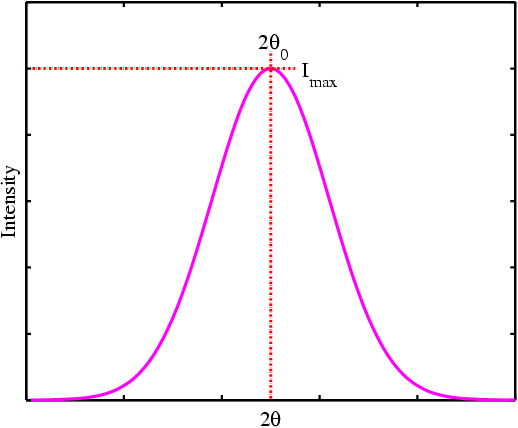 |
Peak Shape Functions
I. Gaussian |
 |
Peak Shape Functions
I. Gaussian |
Gaussian
The Gaussian function is possibly the best-known peak function in the whole of science since many physical and chemical processes are governed by Gaussian statistics. Translated into powder diffraction terms, the function for the intensity at any value of 2θ near the peak becomes:
where Imax is the peak intensity, 2θ0 is the
2θ position of the peak maximum, and the integral breadth, β, is
related to the FWHM peak width, H, by

Because the intensity of a peak is essentially the peak area, it is often convenient to normalise the above Gaussian function so the peak area is unity; i.e.
An equation of this form is often applied in Rietveld programs and will be used later in the course.
|
© Copyright 1997-2006.
Birkbeck College, University of London.
|
Author(s):
Paul Barnes Simon Jacques Martin Vickers |